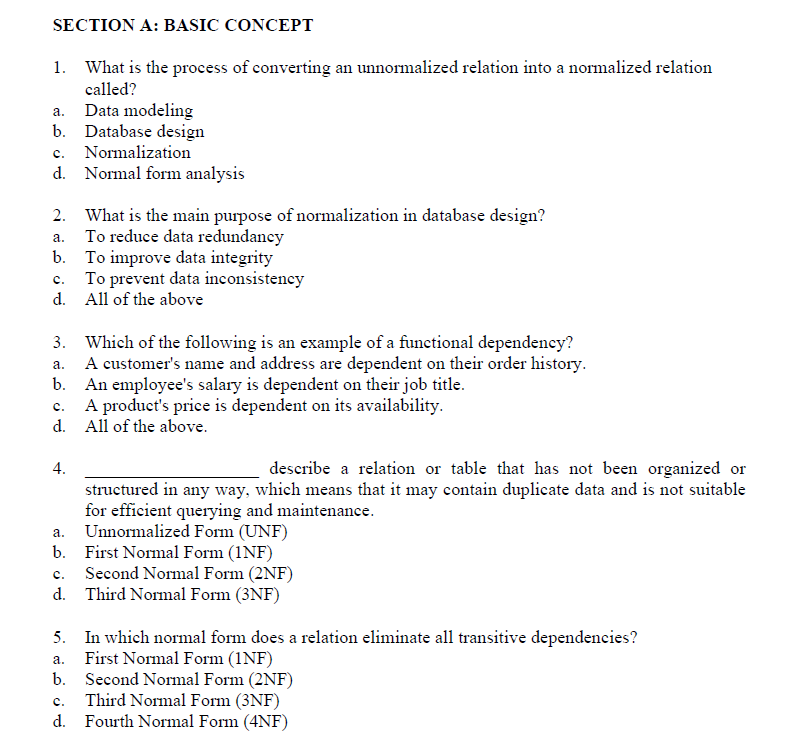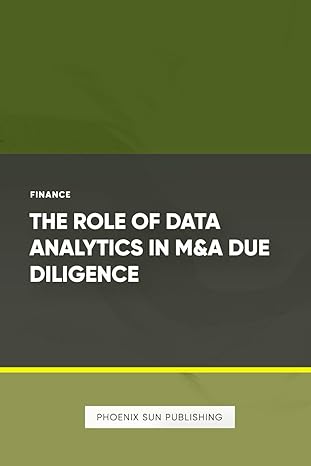Answered step by step
Verified Expert Solution
Question
1 Approved Answer
SECTION A: BASIC CONCEPT What is the process of converting an unnormalized relation into a normalized relation called? a . Data modeling b . Database
SECTION A: BASIC CONCEPT
What is the process of converting an unnormalized relation into a normalized relation
called?
a Data modeling
b Database design
c Normalization
d Normal form analysis
What is the main purpose of normalization in database design?
a To reduce data redundancy
b To improve data integrity
c To prevent data inconsistency
d All of the above
Which of the following is an example of a functional dependency?
a A customer's name and address are dependent on their order history.
b An employee's salary is dependent on their job title.
c A product's price is dependent on its availability.
d All of the above.
describe a relation or table that has not been organized or
structured in any way, which means that it may contain duplicate data and is not suitable
for efficient querying and maintenance.
a Unnormalized Form UNF
b First Normal Form NF
c Second Normal Form
d Third Normal Form NF
In which normal form does a relation eliminate all transitive dependencies?
a First Normal Form NF
b Second Normal Form NF
c Third Normal Form NF
d Fourth Normal Form NF

Step by Step Solution
There are 3 Steps involved in it
Step: 1

Get Instant Access to Expert-Tailored Solutions
See step-by-step solutions with expert insights and AI powered tools for academic success
Step: 2

Step: 3

Ace Your Homework with AI
Get the answers you need in no time with our AI-driven, step-by-step assistance
Get Started


